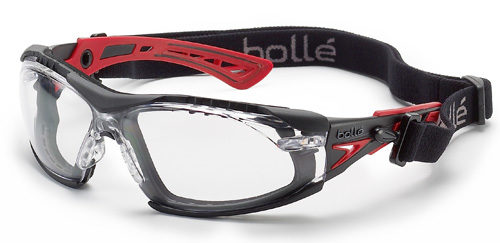Getting workers to wear eye protection
What are the most common reasons why employees fail to wear safety eyewear, and how can we help increase compliance?

Responding is Peggy Kroesch, brand manager, eyewear, Bollé Safety, Overland Park, KS.
It’s a good thing the question is limited to the most common reasons why workers don’t always wear protective eyewear when they should, because addressing even a small percentage of the reasons we’ve heard over the years would take far too long. And while non-compliance is, was and will continue to be a problem, it’s encouraging to note that recent improvements in this product category have increased the ranks of employees who no longer avoid wearing safety glasses.
Visual acuity – or lack thereof – is among the most frequently cited reasons for not wearing safety eyewear. Historically relegated to commodity status, many – if not most – of the offerings in the market have been lowest-common-denominator, price-point-driven products. Those factors almost completely preclude the use of better quality lens materials and the modern manufacturing techniques that deliver clear, distortion-free vision.
Wearing glasses with inferior quality optics almost invariably leads to eye fatigue and significant discomfort. In general, the simplest and most effective way to be certain you are purchasing lenses with superior optical clarity is to choose recognized brands with established reputations within the product category. Although you can reasonably expect to pay a little more, you’ll undoubtedly see an almost immediate bump in compliance. And while clearly a good investment, the difference in price may be a lot less than you might guess.
Next up is the unwanted – and sometimes dangerous – buildup of moisture on the inner lenses of glasses and goggles, commonly known as fogging. Although they have no regulatory obligation to provide some method of decreasing the accumulation of excessive condensation, many (but certainly not all) makers of protective eyewear offer some level of protection against fogging. Although some is almost always better than none, it’s important to note that not all anti-fog technologies are equally effective. For that reason, the best way to be certain of the efficacy of an anti-fog treatment is to put it to the test in your specific work environment.
In workplaces with manufacturing processes involving drills, lathes and other high-speed fabricating equipment; chemical production; or even the simple presence of an excessive amount of dust and dirt, sealed eyewear may be required due to the prevalence of microscopic and semi-microscopic airborne particles. Because sealed eyewear must fit snugly to the wearer’s face, the issue frequently mentioned – particularly when the eyewear is used for extended periods of time – is comfort. To help ensure the products being purchased will be comfortable for long-term use, look for carefully shaped foam inserts that can be easily removed and replaced. It’s also necessary to mention that anti-fog technology is extremely important for sealed safety eyewear.
To one degree or another, safety managers will continue to struggle with workers’ reluctance to wear safety eyewear at all appropriate times. Driven by progressive companies using advanced technologies, recent improvements – including improved optical clarity, modern, lightweight materials and finely tuned ergonomics – have helped many workplaces move significantly closer to unanimous compliance.
Editor's note: This article represents the independent views of the author and should not be construed as a National Safety Council endorsement.
Post a comment to this article
Safety+Health welcomes comments that promote respectful dialogue. Please stay on topic. Comments that contain personal attacks, profanity or abusive language – or those aggressively promoting products or services – will be removed. We reserve the right to determine which comments violate our comment policy. (Anonymous comments are welcome; merely skip the “name” field in the comment box. An email address is required but will not be included with your comment.)

